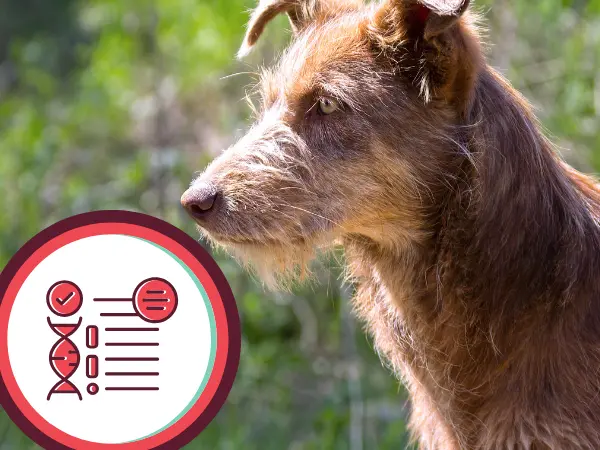While winter is a time of wonder, fun, and closeness with loved ones, we still want to be as safe as possible. Winter is a physically challenging season, even for our fur babies. Winter safety for pets encompasses numerous factors, including food intake, water intake, outdoor exposure, exposure to ice melts, cold weather apparel, and more.
Here is a comprehensive cold-weather pet safety checklist that you can refer to during the coldest time of the year.
1. Provide Extra Food, Extra Water, & Sources of Warmth
First on our cold-weather pet safety list are the basics: extra food, extra water, and extra sources of warmth for your pet.
Extra food is necessary during winter, especially after your pet has been exposed to the cold. This is because dogs and cats need more calories to stay warm during the colder months. Extra water is also necessary because winter’s dry air leads to increased thirst in pets.
Lastly, extra sources of warmth (i.e., added blankets, heating pads) will help your furry friend be comfortable throughout the winter season. These extra sources of warmth are especially important for senior cats or dogs with arthritis because cold temperatures can worsen joint pain.

2. Know Your Pet’s Temperature Limits
Even with specific adaptations to the cold (e.g., double coat fur, larger size), pets are NOT immune to the cold. As a general rule, both cats and dogs get uncomfortable when the temperature dips below 45°F. This is also the temperature range wherein a cat’s exposure to the outside should be limited.
As for dogs, though most are uncomfortable at 45°F, they generally tolerate the cold better than cats do. A dog’s exposure to the outside must be limited when temperatures dip around 32°F.
Note: The above figures are general guidelines. Tolerance to the cold still varies depending on the breed, age, and underlying health conditions of your cat or dog.
3. Control Your Dog’s or Cat’s Outdoor Exposure
During the wintertime, the safest place for a pet is inside the house. Indoors, the temperature is controlled, floors are dry, and living spaces are protected from adverse winter weather; thus, it is the best place for a pet to be for optimum cold-weather pet safety. This kind of environment is ideal for both cats and dogs, as both become susceptible to conditions like hypothermia and frostbite when exposed to the winter elements for too long.
Few cat owners would consider leaving their cats to live outside completely. However, as an added precaution, it is recommended to prevent cats from going outside during adverse weather conditions or during cold winter nights, which are dangerous to felines in general.
As for dog parents, some may be wondering if dogs can be kept in a dog house during winter. While some sources say yes and some say no, the verdict in this guide is this: it’s always best to keep dogs indoors during winter, especially at night.

4. Keep Your Pets Away from Frozen or Icy Bodies of Water
Unfortunately, cats who are allowed to roam are at risk of having an accident in a frozen or icy body of water. Therefore, to ensure winter safety for pets, cat parents are advised to prevent their cats from roaming outside during winter, especially if there is a nearby frozen body of water.
As for dog parents, make sure to have a strong, reliable harness that will keep dogs from bolting, especially when outdoors. Moreover, it is important to remember that if a dog is allowed to go off-leash on a winter hike (near a frozen body of water) or an off-leash area that is not securely fenced, the risk of an accident is greater.
5. Be Mindful of Ice Melts & Antifreeze
Next on our winter safety for pets checklist: be mindful of winter chemicals (i.e., ice melts and antifreeze) that can cause harm to your pet.
Antifreeze is toxic to both cats and dogs, and unfortunately, antifreeze is also tasty to most cats and dogs. Make sure that antifreeze is securely stored, and be sure to clean up any spills immediately to avoid accidental consumption by pets.
In addition, commercial ice melts are irritating to a pet’s paws. The sharp edges of salt in ice melt can cause cuts, and long-term exposure can lead to chemical burns on a dog’s paw pads. Ice melt is also dangerous if ingested.
Make sure to use pet-friendly ice melt for your home. As for dogs taken out for regular walks, consider getting dog booties or using paw balm. Wiping the dog’s paws upon returning home is also a good winter practice.

6. Protect Your Pet When They’re Going Outside
Consider getting winter products and accessories to protect your pet from winter’s harsh elements.
Winter Protection Products For Dogs
The following winter protection products are recommended when taking dogs outdoors during winter:
1. Dog Winter Jacket - Recommended
A dog winter jacket helps keep dogs warm. This winter product is especially recommended for senior dogs, dogs with thin (not dense) fur, and dog breeds that are more prone to the cold (e.g., French bulldogs, Pugs, Beagles).
Note: Larger dogs and dogs with thick fur do NOT automatically tolerate cold temperatures better. Poodles have long and thick-looking fur but they are among the breeds that get cold easily. Great Danes and Mastiffs may seem like large dogs that generate ample body heat, but these too count as breeds that are sensitive to the cold.
2. Dog Booties or Paw Balm - Recommended
Dog booties and paw balm are winter products that protect a dog’s paws during winter. A pair of dog booties helps keep a dog’s paws from touching harmful commercial ice melt or sharp pieces of ice. Dog booties also help prevent snowball build-up on a dog’s paws.
Paw wax or paw balm can be an alternative to dog booties. This topical product helps to avoid ice build-up on the dog’s paws. Paw balm also creates a protective layer from toxic ice melts and salts. However, this chemical barrier is not equal to the physical barrier provided by solid dog booties.
Note: Snowballs or ice balls can build up on a dog’s paw as the snow melts after coming in contact with the dog’s skin. The snow freezes again because of the cold environment, thereby depositing layers of ice that form snowballs.

Outdoor Winter Protection For Cats
Although cats are not usually taken on winter walks and hikes the way that dogs are, there are also equivalent wearable winter products for cats.
1. Cat Winter Jackets - Use with Caution
Cat winter jackets are available in the market. These products can potentially offer a layer of protection from the cold. However, each cat responds to these products differently, with a majority of them not easily tolerating clothes of any kind.
Note: Some cats may also freeze up or lose balance after clothes are put on them. This is a sign of overstimulation and discomfort.
2. Cat Booties - Use with Caution
Cat booties get in the way of the cat’s claws, which give traction and serve as the cat’s main defense. Therefore, cat booties generally lead to discomfort.
3. Paw Balm - Recommended
Should a cat need to go outside during winter, one of the easiest ways to protect the cat’s feet is by using paw wax or paw balm. Paw balm or paw wax protects feline paws (from snowball buildup and ice melts).
7. Make Sure Your Pet’s Fur is Dry After an Outdoor Activity
Next on our list of tips for cold-weather pet safety, make sure to towel-dry your pet as they come home or return to the car after an invigorating session of outdoor winter exercise.
Cold wet fur draws out body heat and could therefore lead to hypothermia. Hypothermia in pets can be mild, moderate, or severe. Continued exposure to a cold source (i.e., wet fur) can lead to a continually dropping body temperature, which can trigger or progress hypothermia in pets.
8. Know When Hypothermia & Frostbite Strikes
Hypothermia and frostbite are some of the biggest health risks pets face when overly exposed to winter’s harsh elements. Knowing the signs of hypothermia and frostbite enables pet parents to take action quickly.
Signs of Hypothermia in Pets
- Drowsiness
- Shivering
- Rapid heart rate
- Pale gums
- Dilated pupils
- Loss of consciousness
Signs of Frostbite in Pets
- Pain and swelling in the affected area
- The affected tissue is cold
- Discolored skin (i.e., pale, bluish, grayish, black)
- Skin ulcers or blisters
If you see any of the above signs, contact a nearby urgent pet care or emergency veterinarian immediately. The best course of action would be to move your pet to a warm place and wait for further instructions from a veterinarian. As an added note, for frostbitten body parts, AVOID rubbing or using direct heat.
9. Complete Your Pet’s Required Vaccines (Especially Before Pet Boarding)
During the winter holidays, pet parents may consider booking a stay for their pet in a pet boarding establishment. Before doing so, make sure that your fur baby’s vaccines are complete so that they are completely protected from transmissible diseases.
We highly recommend staying on top of (at least) the following vaccinations before booking your pet’s stay in a dog boarding or cat boarding establishment:
Highly Recommended Dog Vaccines Before Dog Boarding:
Highly Recommended Cat Vaccines Before Cat Boarding:

Final Thoughts on Protecting Your Pet During Winter
We hope you found these cold-weather pet safety tips helpful! The extreme conditions of winter can be challenging, but with the above tips, you’ll be able to keep your pets safe and happy.
If you have specific questions about your pet’s health, we’re here to help! Sploot Veterinary Care provides primary care, urgent care, and emergency vet services with unparalleled availability.
We have multiple convenient locations in Denver, Chicago, and Colorado Springs.
Our clinic doors are open 365 days a year, with extended vet clinic hours across all locations. Schedule an appointment here or via the Sploot Vets app!
Till next time, we’re with you every pounce of the way!






